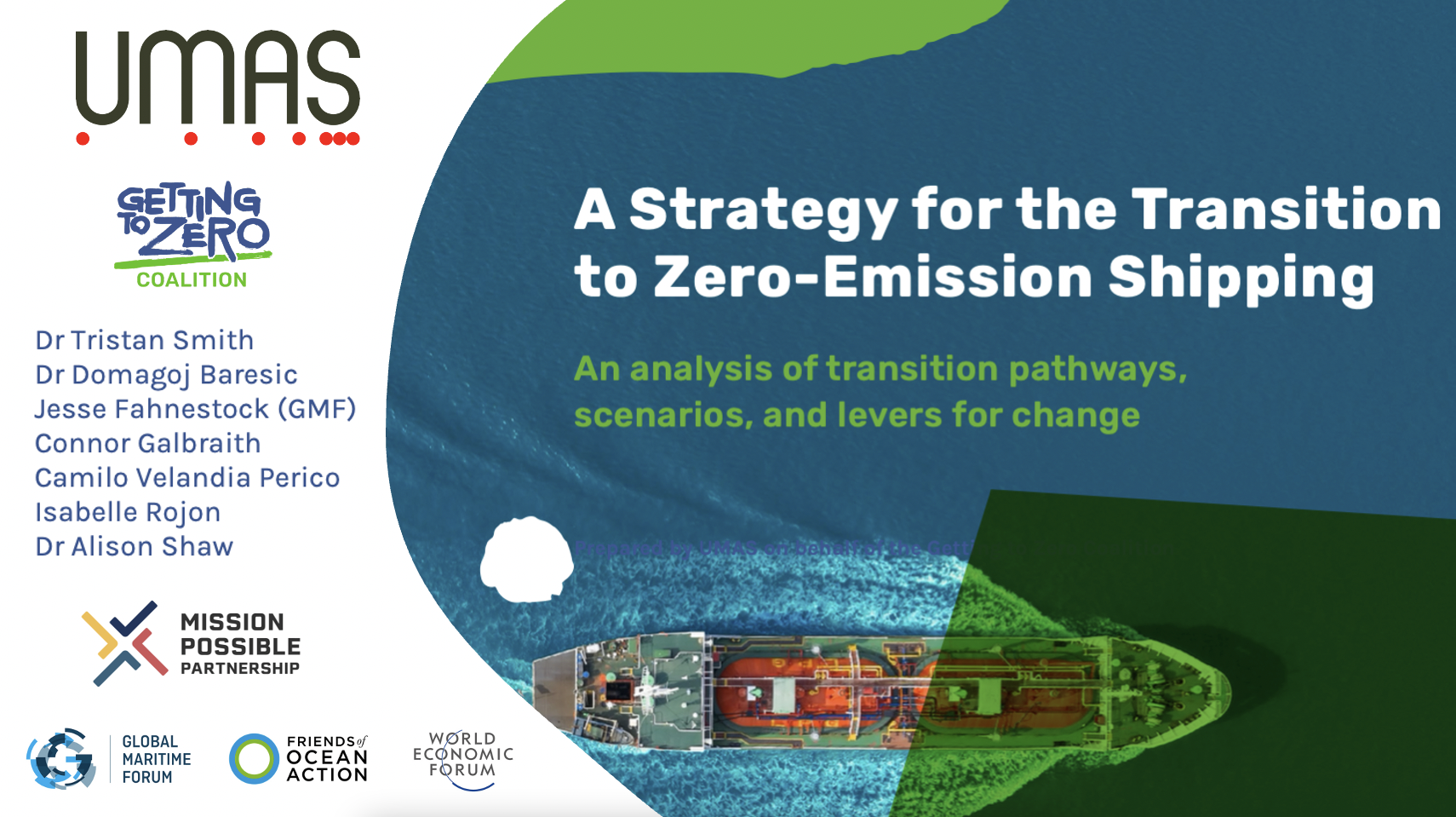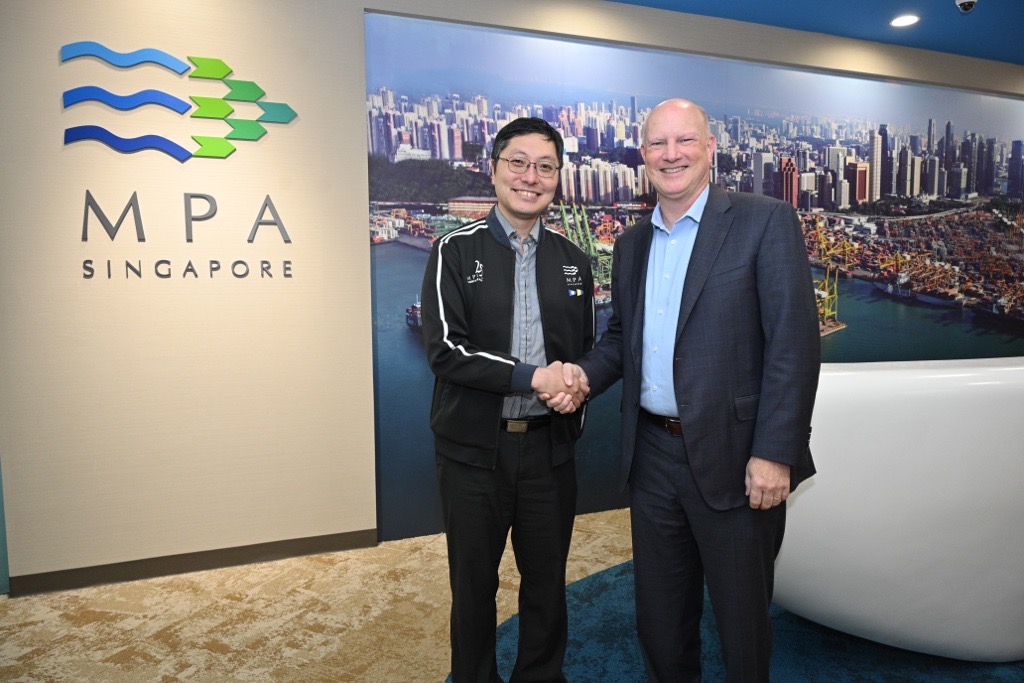Shipping’s transition to zero emissions future is complex but it can, and must, be done through coordinated action across stakeholders
Press release: A fresh multi-disciplinary approach provides a whole-systems view in understanding shipping’s transition and suggests the many levers for change that can and should be pulled for the sector’s transition to zero emission fuels.
A new report by UMAS for The Getting to Zero Coalition and funded by the Mission Possible Partnership, titled “Strategy for the Transition to Zero-Emission Shipping” is the first major shipping report to use a multi-disciplinary approach to bring together transition theory with techno-economics and use these to synthesize and evidence new insights.
The fresh perspective enabled the researchers to develop a multi-stakeholder integrated transition strategy and study the essential elements of the shipping system’s transition away from fossil fuels and to zero emissions by 2050. The elements studied include the political, technical, economic, and commercial requirements, and the actions needed from the sector to deliver on them. The study challenges several narratives around industry and policy action, for example the use of carbon pricing as a panacea to solve the sector’s transition to zero emission fuels and the necessity of the IMO to drive early adoption.
Shipping has undergone transitions in the past and can do so again. Through a study of shipping’s previous transitions and other sectoral transitions, the report shows that a transition away from fossil fuels in shipping has much in common with, and can learn from, other transitions. The transition is an opportunity that can create new markets, new technologies and new jobs alongside wider benefits for society.
Dr Domagoj Baresic, of UMAS said “The transition to zero carbon marine fuels offers many investment opportunities across the entire maritime supply chain. Multiple opportunities exist for synergies with land-based industries, including agriculture, chemicals, land transport and energy. Our research shows that many of these business opportunities exist today and future policies will make them even more appealing”
The transition is not all about IMO, other actors including national and regional regulation, and private stakeholders have an important role to play.Industry leadership, collaboration and early-stage investment (public and private) is critical for the ‘emergence’ phase in which solutions are tested and evaluated, costs are reduced, opportunities and risks are crystallised.
This private sector activity can be taken in close collaboration with the public sector, and strong first mover countries have in the past created the conditions for that investment. Countries can act in parallel or in a more coordinated way. For shipping’s transition away from fossil fuel there are several countries that have the potential to act unilaterally, and emerging opportunities to make these moves in concert and create international coherence, to the benefit of the global transition.
“IMO policy is important, but is unlikely to be the sole enabler of first movers, in part due to the complexity and timescales involved in developing global policy. Some national or regional actors now appear particularly well-positioned to lead sub-global policy and collaboration. Such action can serve to shore up and stimulate global policy developments at IMO and we show that even a small number of countries can impact a very significant share of the identified early adoption fuel consumption” says Dr Alison Shaw of UMAS, a co-author of the study.
Designing ships to be zero-ready or retrofittable can reduce some of the risks in the fuel transition. On the important question of future fuels, the report concludes that the pathway is not predetermined, but will be impacted by the choices of the coming years. This means that short-terms plans must be made with the long-term requirements of Scalable Zero-Emissions Fuels (SZEF) in mind.
Regardless of technology choice, land-side infrastructure for producing and supplying new fuels will be a critical component of shipping’s fuel transition. The likely speed of the transition will put huge pressure on the scalability of production processes and hydrogen-based fuels whose main input is electricity are most likely to deliver during this phase. Growing demand for hydrogen and hydrogen-derived fuels will help lower their costs, by driving up scale of production in contrast to fuels dependent on more fundamentally constrained biomass feedstocks – for whom demand growth ultimately raises prices.
“Our modelling has shown that while sustainable policies can light the way, it’s private investment along all points of the maritime supply chain that will drive the industry towards decarbonisation. There is still much work to do, but through frameworks such as this we can continue to crystallise a prosperous, clean vision of the future that is realistic and deliverable in our lifetimes” says Connor Galbraith of UMAS, one of the study’s co-authors.
The study finds that the number of Scalable Zero-Emissions Fuels (SZEF) retrofits may be roughly equal to newbuilt SZEF ships over the transition. Designing ships to be zero-ready or retrofittable to SZEF can reduce some of the risks in the fuel transition.
There are abundant opportunities for use of scalable zero emission fuels this decade. By analysing the geography and routes for first movers, the study estimates about 10% of shipping’s total fuel consumption has promising conditions for transitioning to SZEF during the 2020s – there is no shortage of opportunity. The study shows the vessels and fuel production associated with regular journeys, in particular, geographies on relatively simple routes with a small number of regular stops, and near low-cost hydrogen production and suggests these can be prioritized as first movers. There are options to incentivize these first movers through plurilateral actions (groups of likeminded countries acting together), or multilateral policy through IMO regulation.
“Last week’s launch of Cargo Owners for Zero-Emission Vessels (coZEV), with some of the best known customers of shipping demanding truly zero emissions by 2040 further explains why today’s investments should be made with the long-run solution of scalable, zero-emission fuels in mind, even if other fuels are used before that long-run goal is reached” says Camilo Velandia Perico of UMAS, one of the study’s co-authors.
Some national or regional actors appear particularly well positioned to lead sub-global policy and collaboration: Japan, USA, China, the European Union, and Norway are all potential candidates. The analysis of early adopter routes shows that these countries, either between them or on their key trade routes with third countries, can impact a very significant share of the identified early adoption fuel consumption – such that their plurilateral intervention would be meaningful to the global transition.
Read the full Transition Strategy
The satellite reports accompanying the Transition Strategy can be found below:

































